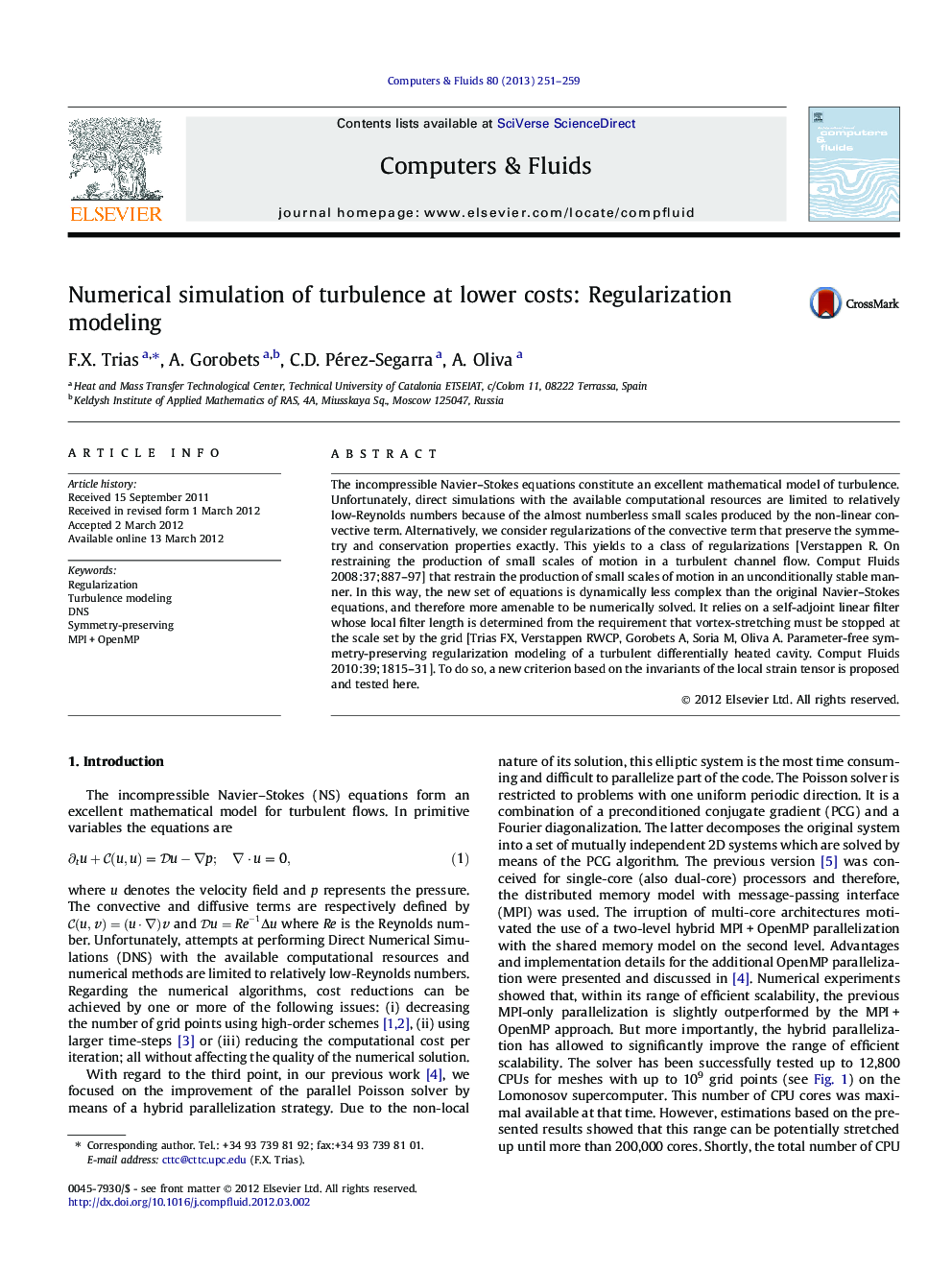| Article ID | Journal | Published Year | Pages | File Type |
|---|---|---|---|---|
| 756606 | Computers & Fluids | 2013 | 9 Pages |
The incompressible Navier–Stokes equations constitute an excellent mathematical model of turbulence. Unfortunately, direct simulations with the available computational resources are limited to relatively low-Reynolds numbers because of the almost numberless small scales produced by the non-linear convective term. Alternatively, we consider regularizations of the convective term that preserve the symmetry and conservation properties exactly. This yields to a class of regularizations [Verstappen R. On restraining the production of small scales of motion in a turbulent channel flow. Comput Fluids 2008:37;887–97] that restrain the production of small scales of motion in an unconditionally stable manner. In this way, the new set of equations is dynamically less complex than the original Navier–Stokes equations, and therefore more amenable to be numerically solved. It relies on a self-adjoint linear filter whose local filter length is determined from the requirement that vortex-stretching must be stopped at the scale set by the grid [Trias FX, Verstappen RWCP, Gorobets A, Soria M, Oliva A. Parameter-free symmetry-preserving regularization modeling of a turbulent differentially heated cavity. Comput Fluids 2010:39;1815–31]. To do so, a new criterion based on the invariants of the local strain tensor is proposed and tested here.
